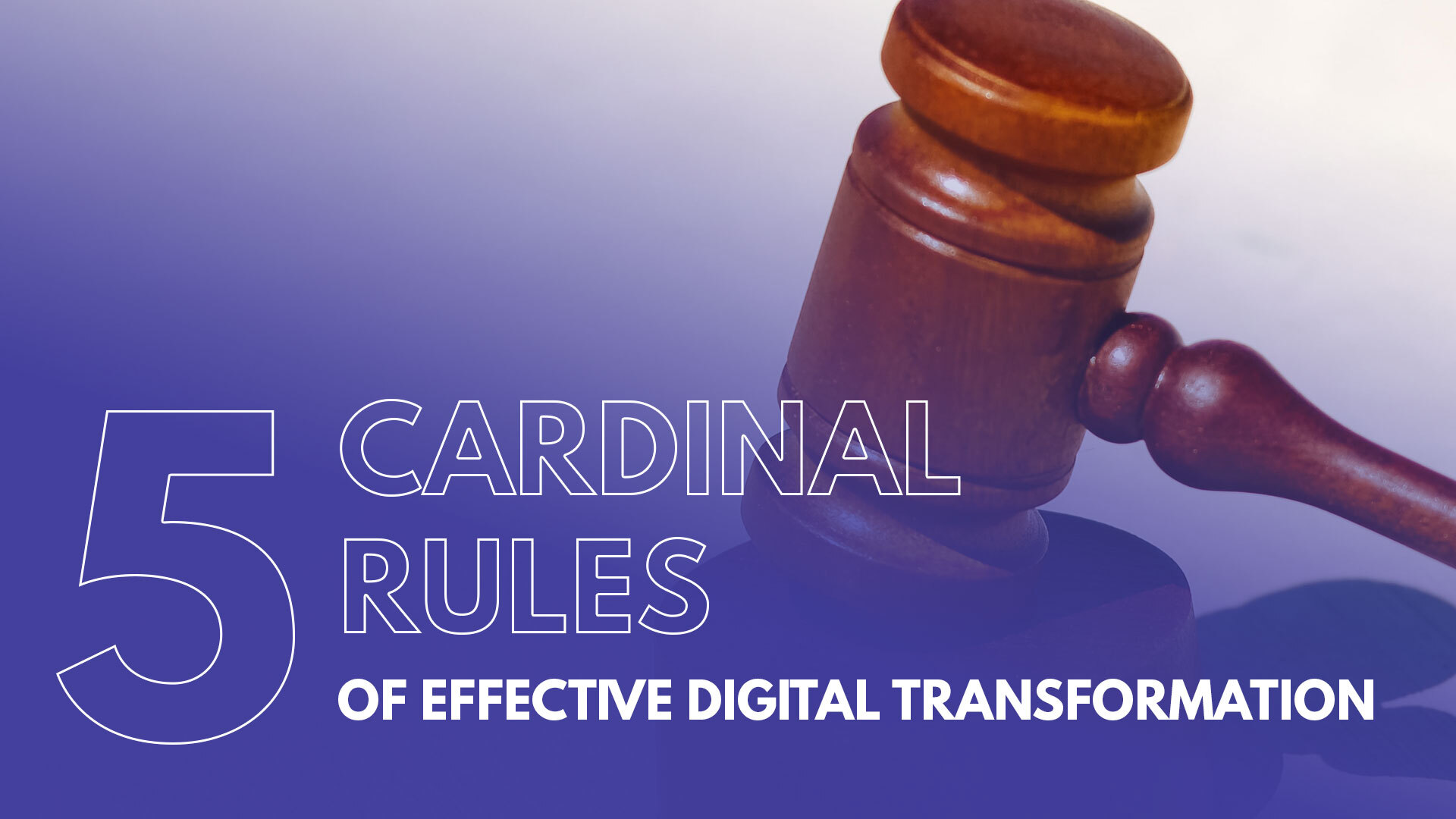
5 Cardinal Rules of Effective Digital Transformation
Digital transformation has been the buzz phrase across many industries in the last few years. The buzz has become louder with the effects of COVID-19 worldwide. With hundreds, even thousands of businesses and organizations forced to reckon with the future of work, digital transformation has become more crucial than ever.
No single definition can completely encompass how individual businesses translate digital transformation.
It’s all about the massive technological shifts bound to occur across all organizations in all industries. The transformation process for one organization will differ from all the others.
Digital transformation is inevitable. With the lightning-fast evolution of technology, the only logical approach for businesses is to keep up with the ongoing revolution. These five pillars of effective digital transformation will guide you along the way:
1. Definite your Goals
Any system-wide transformation should have a clear vision and effective strategy at its center. Before anything else, you have to set definite goals and clearly define all your initiatives for the future. For clarity, you can prepare answers to the following questions:
- Where do I want to go, and what steps do I need to take to get there?
- What can I do to prepare for the future of my company?
- How do I track progress and measure success?
You have to define your objectives. If you own a computer software company, not even your direct competitors will have the same goals. You can’t just dive into digital transformation for the sake of appearing modern. You need to be purposeful with your strategies and actions to maximize all the benefits of digital technologies.
2. Focus on People
Once you set your goals, you will need your people’s input to drive the change. Your digital leaders are responsible for implementing and facilitating your internal transformation.
There are people on your team capable of spearheading this wave of change in your organization; you should harness their abilities and dedication. Your employees are an essential voice, and their experiences should be a solid pillar to build your transformation upon.
3. Prioritize Customer Experience
Your revenue will always depend on your customer. Your digital transformation should only enhance the customer experience. You should keep your relationship with them in mind as you strategize and implement internal changes.
You can never go wrong with a customer-focused approach; digital technologies’ benefits technologies should only improve your relationship moving forward.
4. Implement Holistic Change
Digital transformation isn’t a one-and-done deal. It’s an ongoing change process where you constantly have to adjust and innovate. A holistic mindset will ensure that no one in your organization—from employees to shareholders—will be left behind. This way, there will not be any misunderstanding or oversight that will lead to financial loss.
5. A Journey With No End
Just as it is an ever-changing process, digital formation is also a journey that doesn’t end. As long as your business is running, your employees and systems should continue changing and adapting to technological advances.
As the months and years pass, you should continuously evaluate and optimize your processes to make sure you work as efficiently as possible.
Conclusion
If your company isn’t already changing the way you do business, you need to start now. Digital transformation isn’t an option but a necessity. Your team of digital leaders should be ready to spearhead this change and watch over the optimization of your systems, employee experience, and customer relations.
Are you looking for digital product development services? AscentCore is here for you. We leverage the latest technology to deliver transformational results for all our clients. You can trust us to realize your most crucial transformation initiatives. Contact us. To learn more about how we can help you achieve your organization’s digital transformation.